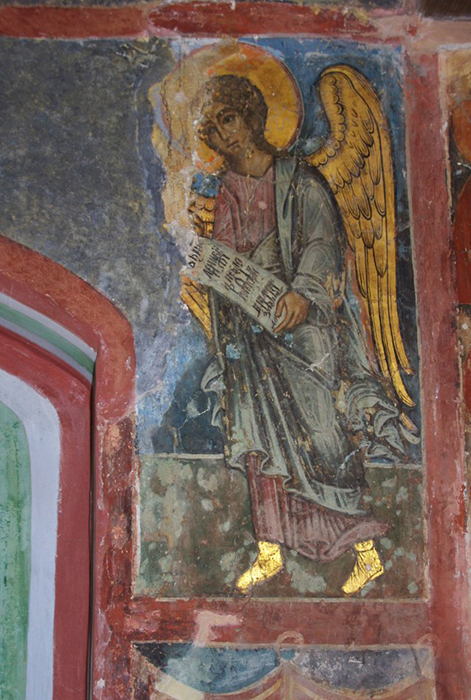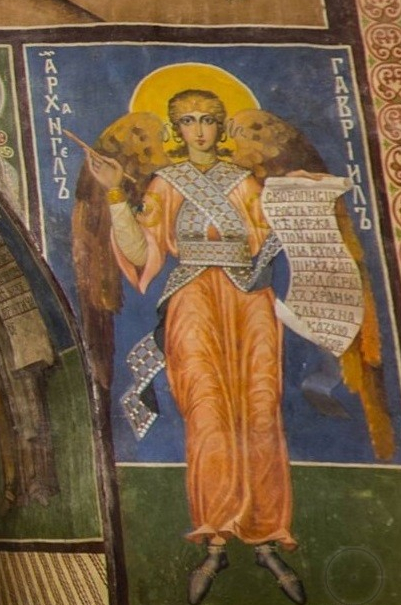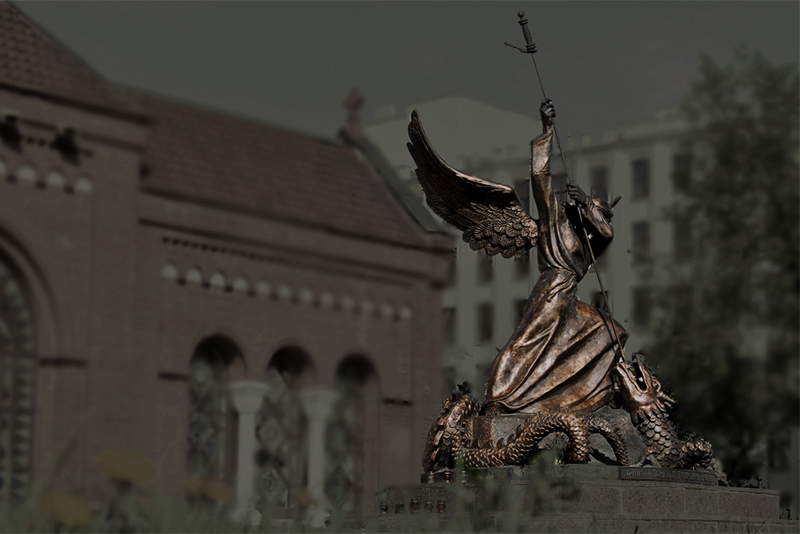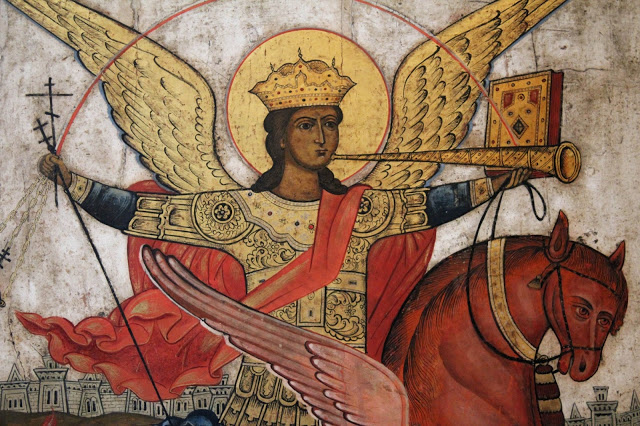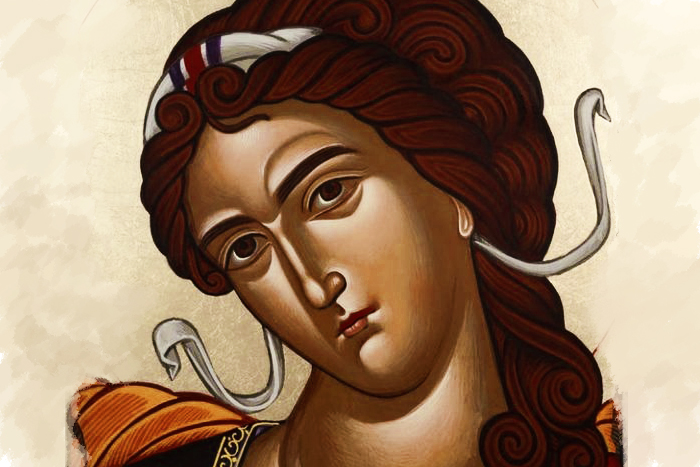
Let’s take a look at a 14th century icon in the Byzantine Museum, Athens. It represents the Archangel Michael, leader of the heavenly armies.
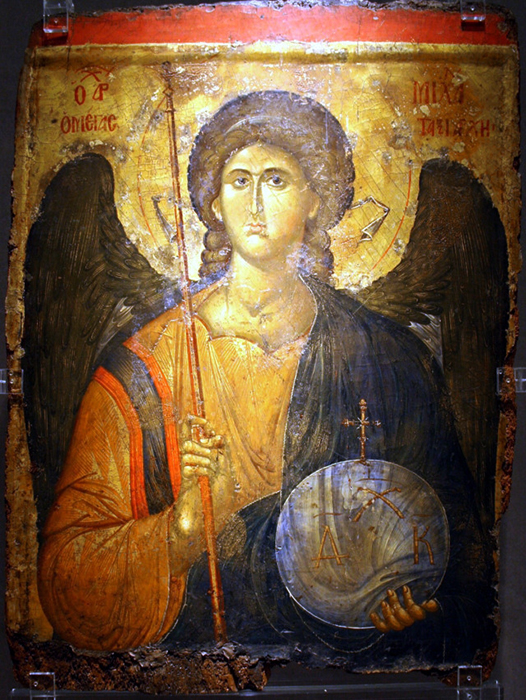
The question asked was, what do the letters in the round mirror (depicted as a transparent sphere here) held by St. Michael mean?
Let’s look at them:
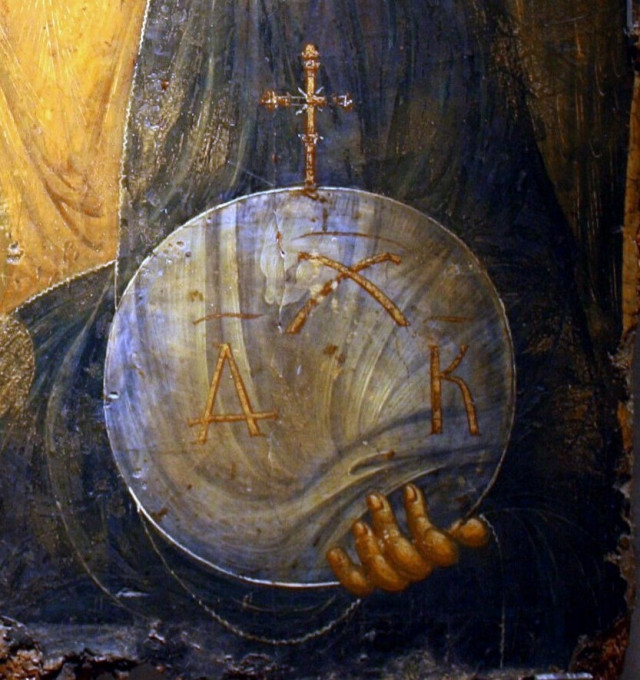
First, we need to know that the letters are Greek, which makes sense, given that it is a Byzantine icon.
The first letter — at the top — is Χ. It stands for Χριστος — Khristos — “Christ.”
It would be easy to mistake the second letter, at left, for an Α. But actually it is the letter Δ, which is often found written in this manner in old icons. It stands for Δικαιος — Dikaios — meaning “Righteous.”
The third letter, at right, is Κ, for Κριτης — Krites — “Judge.” It is related to our English words “critic” and criticism.”
All together, the letters abbreviate Χ(ριστός) Δ(ίκαιος) Κ(ριτής). — “Christ [the] Righteous Judge.” It is an expression that recalls the words of John 7:24:
μὴ κρίνετε κατ’ ὄψιν, ἀλλὰ τὴν δικαίαν κρίσιν κρίνετε
Me krinete kat’ opsin, alla ten dikiaian krisin krinete
Not judge according-to appearance, but the rightous judgment judge
“Judge not according to the appearance, but judge righteous judgment.”
You may recall that a variant of this phrase is often found as a Gospel text in Russian icons of Jesus as “Lord Almighty.”
Не на лица судите сынове человечестии, но праведен суд судите: им же бо судом судите, судят вам и в нюже меру мерите, возмерится вам.
“Judge not according to the appearance, sons of men, but judge righteous judgment. For with what judgment you judge, you shall be judged, and with what measure you measure, you shall be measured.”
There is also a title inscription on the Michael icon that we should examine. It is divided into left and right parts:
At left:

Ὁ ΑΡΧ[ΩΝ]….
HO ARKHON
Ὁ ΜΕΓΑC…
HO MEGAS
Notice how the the A and the P (R) are joined, and how the X (KH) in Arkhon is placed above, below a curved line indicating abbreviation.
At right:
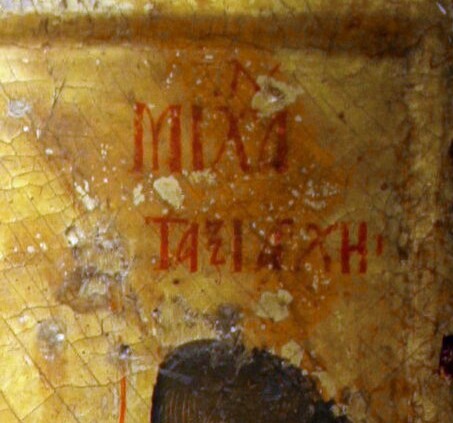
…ΜΙΧΑ[Η]Λ
MIKHAEL
…ΤΑΞΙΑΡΧΗC
TAXIARKHIS
Notice that the Λ (L) in MIKHAEL is placed above the last two letters.
This title inscription is read with the first line jumping from the left to right side, as does the second, like this:
Ὁ ΑΡΧ(ΩΝ) ΜΙΧΑΗΛ Ὁ ΜΕΓΑC ΤΑΞΙΑΡΧΗC
HO ARKHON MIKHAEL HO MEGAS TAXIARKHES
“THE PRINCE MICHAEL THE GREAT COMMANDER”
That title recalls the Old Testament book of Daniel, 12:1, in the Septuagint Greek version:
Και ἐν τῷ καιρῷ ἐκείνῳ ἀναστήσεται Μιχαὴλ ὁ ἄρχων ὁ μέγας, ὁ ἑστηκὼς ἐπὶ τοὺς υἱοὺς τοῦ λαοῦ σου·
“And in that time shall stand up Michael the great prince, that stands over the sons of your people.”
At the entrance to old Japanese Buddhist temples, there were often two guardian deities. Here is a pair dating from the Kamakura Period (13th-early 14th century):

I always think of such guardian deities when I see the two angels painted at the entrance to Orthodox Churches in Slavic countries. These are the “Ангелы Господни, записывающие имена входящих в храм” — the “Angels of the Lord, Recording the Names of Those Entering the Church.”
When both are found (sometimes there is only one), the angel on the left (in Slavic countries) of the entry is the Archangel Michael (Mikhail), as seen here in the Church of Simeon the God-receiver at the Zverin Monastery of Novgorod.:
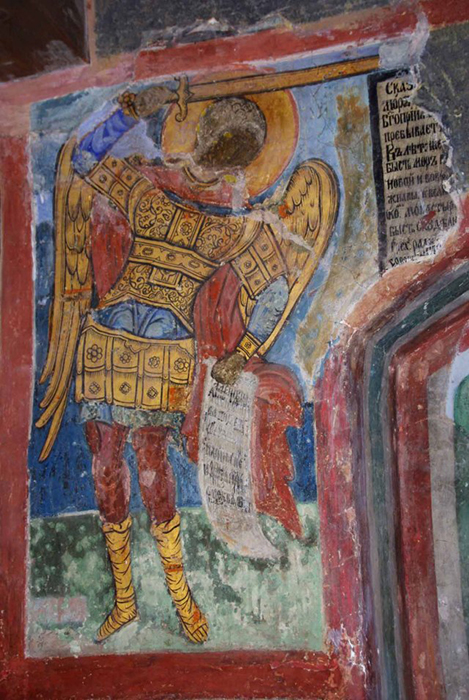
He threateningly holds a sword in his right hand, and a scroll in his left.
In the Greek Painter’s Manual (Hermineia) of Dionysios of Fourna, we find this:
“Inside the door of the temple, on the right, the Archangel Michael; He holds a sword and a scroll with these words: ‘I am a soldier of God, and armed with a sword. Those who enter here with fear, I defend them, I guard them, I protect them and I observe them; But those who enter with an unclean heart, I strike them mercilessly with this sword.‘
Sometimes in Slavic Churches, Michael’s scroll reads:
“I extend my sword to those who enter the pure house of God with impure hearts.”
